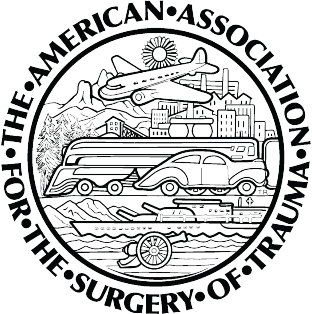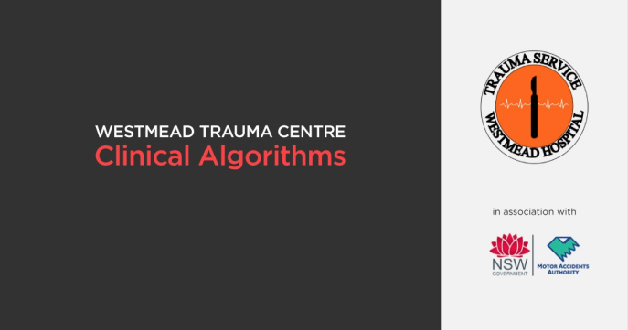The AAST is dedicated to discovery, dissemination, implementation, and evaluation of knowledge related to acute care surgery (trauma, surgical critical care, and emergency general surgery) by fostering research, education, and professional development in an environment of fellowship and collegiality.
-
Emergency, Surgery, Anaesthetics
-
Intensive Care & Rehabilitation
-
Discharge, Transfer & Injury Prevention
Our Vision
To deliver excellence in trauma care to the Western Trauma Network across the full continuum of care including injury prevention, pre-hospital care, acute care and rehabilitation.Our Purpose
To support a clear clinical pathway for trauma patients by providing the full spectrum of care for moderately to severely injured patients from initial resuscitation through to rehabilitation and discharge.Our Goals
To operate as part of the NSW Trauma Service in the management of all major trauma patients who require complex multidisciplinary care and providing clinical leadership, education, clinical support and workforce development.In addition to the clinical responsibilities, the Trauma Service has significant roles in education, injury prevention, quality improvement and research on a local, state and national level.
Research
Research in the field of trauma is vital to continually improve patient outcomes together with improving the trauma system, making trauma care more efficient and cost effective. Research is also a key function of the Westmead Trauma Service. The service has a reputable history of producing quality research which has assisted in the improvement of the clinical management of the trauma patient.
The Trauma Service participates in multicentre trials which underpins our current treatment of the trauma patient and is always happy to participate and discuss any research proposals.
Please contact us if you have any research you are interested in.
Trauma Links
WE DO THIS BY:
- Providing leadership in the field of trauma
- Monitoring and coordinating the NSW trauma system
- Supporting clinicians working in the trauma system & others who contribute to injury prevention programs and trauma research
- Being a key facilitator of clinical care review and monitoring together with education and research

The Eastern Association for the Surgery of Trauma (EAST) provides a forum for the exchange of knowledge to advance the care and rehabilitation of the injured patient. EAST places particular emphasis on interdisciplinary collaboration, scholarship, fellowship and developing leadership among young surgeons active in the care of the injured patient.
A 501(c)(3) organization, EAST has more than 2,600 members who meet yearly at a conference at which scientific papers are presented and advances in the field are discussed. EAST also has established lectureships, scholarships and a development fund to promote, reward, and recognize individuals working in the field of injury and injury control.

The ATS is the only multidisciplinary trauma society in Australasia. It brings together those who are treating, researching and teaching in trauma as well as those wanting to learn more with the aim to provide the highest standard of trauma care in Australasia. The diversity of members and their vast experience is a great forum for building improvements in injury management across Australia and New Zealand.
The society has an annual scientific meeting which rotates around Australasia. There are collaborative meetings with other organisations in order to foster the exchange of concepts in trauma management. At these meetings there is a combination of plenary sessions with invited speakers, free papers, research papers, skills workshops and interactive debates. The meetings are a chance for you to Ask the Specialists (ATS) and keep up with the latest in trauma advances, care and controversies.
ANZAST is the society for surgeons managing trauma in Australia and New Zealand. Its goal is to ensure seriously and critically injured New Zealand and Australian patients receive optimal and world-class surgical care.
This goal will be achieved by overseeing post fellowship surgical education and training, guiding the surgical trauma curriculum, supporting quality research, promoting effective systems of care and advocating on behalf of surgeons providing care to the seriously injured.
The premier scholarly organization for surgeons dedicated to the field of trauma and the care of critically ill surgical patients.

The Westmead Hospital Trauma Clinical Algorithms have been developed, utilising evidence-based information, to enhance patient and clinical decision-making, improve efficiency in delivery of safe, standardised health care.
The algorithms presented are intended primarily for health professionals and the following audiences, specifically at Westmead Hospital, Sydney NSW Australia:
Physicians, nurses and other health care professionals
Health care administrators
Researchers

Nearly 1.35 million people die in road crashes each year globally, on average 3,700 deaths a day. An additional 20-50 million are injured or disabled. More than half of all road traffic deaths occur among young adults ages 15-44. Road traffic injuries are the world’s leading cause of death among young people aged 15-29 years at 48%.
In 2019, 1,189 people were killed in road crashes in Australia. 238 of these were aged 17 – 25 (20%). In NSW in 2019 young drivers and riders aged 17 to 25 years were involved in 4,086 road traffic casualty crashes, whilst there were also 61 young adults aged 17 to 25 year olds killed and a further 2,074 injured from crashes in that year.
#2019 data are preliminary and subject to change
As a Level 1 Trauma Centre, Westmead Hospital admitted 2,924 trauma patients in 2019. There were 722 patients involved in road related incidents of which 169 were aged 25 or less. Of these 133 were male, 36 female with 3 fatalities. Westmead’s Trauma Service has a moral and professional obligation to do everything possible to reduce this number. bstreetsmart was developed to reduce and/or prevent the number of young lives affected by road related incidents. Our youth have the capacity and ability to change their behaviours that put them at risk. Death and serious injury are still occurring despite the education being received in the schools. bstreetsmart approaches this problem in a multimodal, innovative & interactive format.
bstreetsmart’s primary objective is to reduce the fatality and injury rates of young people by promoting safe behaviour. It is also to provide an opportunity for students and teachers to access current information in the areas of trauma care and injury prevention strategies.
A further objective is to present to the young people, most at risk, a realistic look at the trauma caused by road crashes. bstreetsmart content and structure is aimed to treat young people as adults allowing them freedom to choose from a range of interactive exhibits. The entire program is structured to be relevant, engaging and at the same time educational.
2020
As Covid-19 closed all live events for 2020, the bstreetsmart team reimagined our 3 day event by adapting it to a shortened LIVE 2 hour version of the program held over 3 Tuesdays in August. Two sessions were held each day at 10am and 2pm to ensure both eastern and western state schools were able to participate. As the event was live, we were able to maintain the interactive capacity of the event as students were able to ask questions live via the “Chat” and “Q&A” portals As there were no venue hire fees this year, bstreetsmart was able to offer the event to all schools across Australia free of charge.
Covid-19
To help us protect you, our patients and our staff, please wear a mask and wash your hands or use the hand sanitiser provided when you enter and when you leave.
